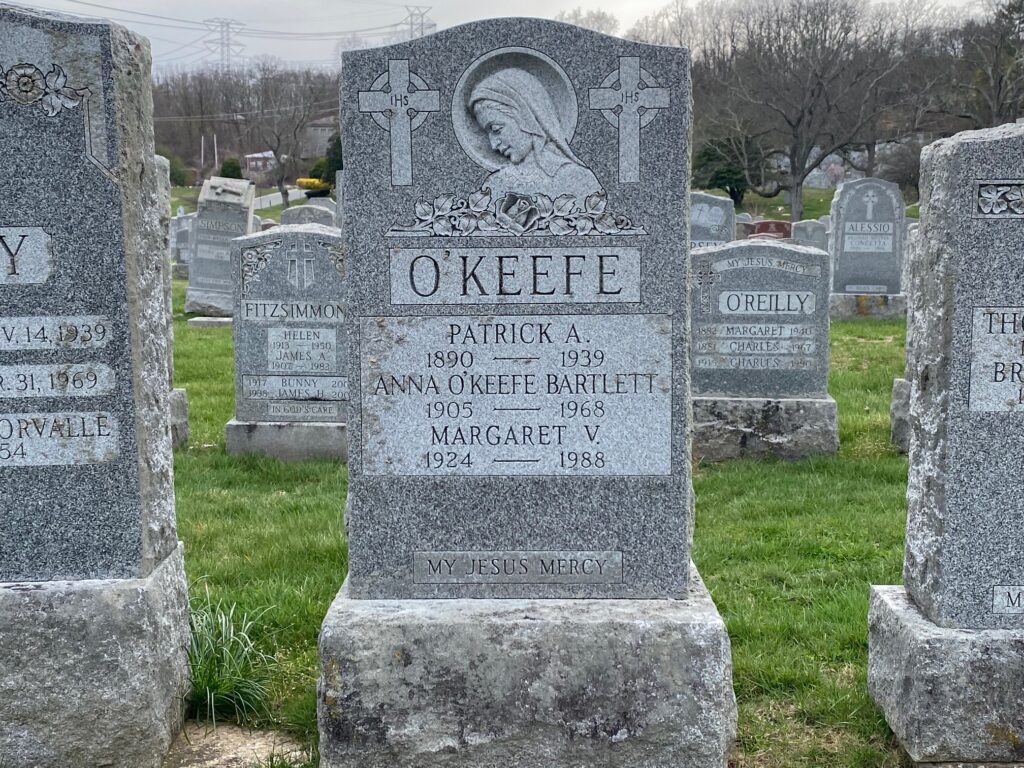
Spirit of Titanic Goes on in Archdiocese of New York’s Catholic Cemeteries
Local
| 04/14/2023
Survivors from the 20th century’s most famous shipwreck are interred in Calvary and Allied Cemeteries

When RMS Titanic struck an iceberg and sank on the night of April 15, 1912, it was on its maiden voyage across the Atlantic Ocean to its final port of call that trip: New York City. That was also the final destination for many on board.
Among the 712 people that were rescued from lifeboats and the water that night, a number of survivors from the 20th century’s most famous shipwreck found eternal rest in the New York area, interred in the Archdiocese of New York’s Calvary and Allied Cemeteries.
For genealogists and historians, cemeteries are repositories of information. What is — and isn’t — said about the deceased on their grave marker reveals much about the individual, their family, and the time during which they lived.
Calvary and Allied Cemeteries operates six sites in the New York area: Ascension; Calvary; Gate of Heaven; Resurrection; St. Mary’s; and St. Ann’s. Two of these, Calvary and Gate of Heaven, are the final resting place for 10 Titanic survivors, and one other individual with a significant connection to the sinking.
At Calvary Cemetery in Woodside, even the survivors’ stories can carry with them a dose of tragedy. Buried in an unmarked grave is Eugenie Baclini. Traveling with her mother and two siblings from modern-day Lebanon to be reunited with her father in Brooklyn, she was rescued, only to become the second Titanic survivor to die, on August 30, 1912, from meningitis. She was only three years old.
Calvary is also the final resting place of Marie Baclini, Eugenie’s sister. Marie lived to age 75, and, also unlike her sister, is buried with her husband under “an elaborate headstone,” according to Titanic website Encyclopedia Titanica. Her granddaughter is the Honorable Lara Genovesi, a judge for the 2nd Department of the New York Supreme Court Appellate Division.
Seventeen-year-old Kate Gilnagh was on her way from County Longford in Ireland to join her sister in Manhattan aboard Titanic; in fact, Kate managed to enter a full lifeboat by exclaiming that her sister was on it, a white lie that may have saved her life. Upon arrival, she gave her destination as 239 East 55th Street (about a block from the Archdiocese of New York’s headquarters today). She later married John Manning, who preceded her in death by 16 years. They are buried together in Calvary Cemetery.
At Gate of Heaven Cemetery in Hawthorne lie more Titanic stories. Titanic history hunters should note that there is also a Gate of Heaven Cemetery in East Hanover, New Jersey, where there are other related graves. Among those at rest in Hawthorne are Hannah Spollen (nee Riordan), who was traveling from County Cork, Ireland, to join her sister and a likely position doing domestic work. Although she was rescued from Titanic, her cousin Patrick O’Connor and friend John Meehan were lost, according to Encyclopedia Titanica. Hannah later married John Spollen at St. Anselm’s Church (now the Church of St. Anselm and St. Roch) in the Bronx in 1938. She died in 1983, and John followed her about one year later. They are buried together, their headstone making no mention of Titanic.
Patrick O’Keefe served on board Titanic as a porter. He made a lucky escape, balancing on the overturned collapsible lifeboat B for hours until he was rescued by Carpathia. He later fought in World War I for the Allies and survived the war. Patrick died an untimely death at age 49, and is buried with his wife, Anna, who remarried after his death; and their daughter Margaret, who never married.
Thomas O’Connor was not on board Titanic at the time of its sinking. Instead, he was working in the galley of RMS Carpathia, a Cunard Line ship that was on its way to the Mediterranean. Upon receiving Titanic‘s distress signal, Captain Arthur Rostron changed course and traveled at full speed to the stricken ship’s location, but arrived more than three hours after it had sunk. Carpathia picked up Titanic‘s survivors and most of its lifeboats, and returned with them to New York. O’Connor, for his part, was later involved in Irish revolutionary activities, before settling in New York in the 1920s and working as an accountant. He died in 1955, and is buried not far from Patrick O’Keefe.
Catholic cemeteries are sacred grounds consecrated by the church to provide a dignified final resting place that affirms the faith of the departed.
Holy Cross Church is giving these initiatives “the highest importance.”
04/11/2024 |
By:
Belief in the Eucharist has declined to a startling low: only about 30% of Catholics believe in Jesus’ Real Presence in the Eucharist, according to a recent Pew study.
04/11/2024 |
By:
You can watch Cardinal Dolan’s homily from Mass at the tomb of Pope Saint John Paul II for the leadership of FOCUS here.
04/11/2024 |
By:
Load More
Error, group does not exist! Check your syntax! (ID: 7)

